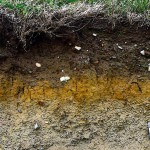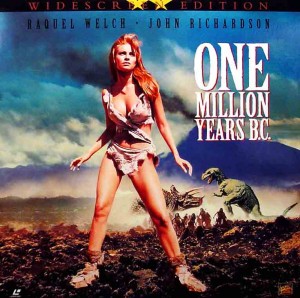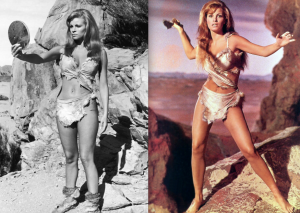What is an artifact? More importantly, what can an artifact tell us about past cultures, peoples or even individuals? If you ask someone these questions, it’s very likely that you will get an earful about beautiful, rare and precious items found in exotic places deeply attached to ancient rituals and curses.
Besides the plagues, curses and grumpy mummies, I don’t think anyone in that movie was too interested in learning about ancient Egyptian culture from those artifacts.
In fact, the most commonly encountered artifacts in the archaeological record are lithic and ceramic industries – stone tools and pottery. Of course, there are a HUGE variety of other types of artifacts in the archaeological record, but to keep it relatively concise I’ll mainly discuss these two industries. These artifacts are among the first to be made by early humans and even hominids and can tell us important information about the daily lives and behavioural patterns of past cultures – they are often beautiful and can be precious, but without any context they are just objects that mean absolutely, squat-diddly nothing.
So what makes an artifact culturally meaningful?
The answer is its context. The context of an archaeological find depends on geographic location, depth/soil layer or level in which an artifact is recovered (stratigraphy), association with surrounding ecofacts and features (and whether or not the association has been altered by living organisms or natural geological forces), and analysis of the processes that some human being undertook to make that object (which can indicate cultural change over time.)
For example, the observation of stratigraphy – the level and layer of soil in which stone tools or pottery shards (or any other artifact, for that matter) are found is very important in assessing the age and associations of the materials discovered. An artifact may look pretty, but if you don’t know its context, you lose its most valuable properties. Take that, Indiana Jones.
Association with surrounding ecofacts (naturally-occurring yet culturally meaningful remains – such as animal bones or plant materials) and features (stationary human-made or altered materials, such as a hearth or building foundations) is another way that archaeologists can make sense of the artifacts they find. The age and type of animal and plant remains occurring in the same layer and level as an artifact can give a huge amount of information as to the climatic state, available resources and behavioural patterns of ancient people (for example, an arrowhead found in association with mammoth rib bones gives an idea of how long ago the tool was crafted and to what cultural means it was used – in this case, acquiring a hefty dinner.) Association with features in the same context can also be useful in assessing an artifact’s age (through relative dating methods) and to indicate how an artifact was used in the past.
Now THAT’S what I call learning culturally-meaningful information from artifacts!
One of my favourite examples of the extent of blatant lies and misconceptions in archaeology and anthropology is the movie One Million Years B.C. – depicting a prehistoric world in which humans and dinosaurs lived and died together.
“Travel back through time and space to the edge of man’s beginnings…discover a savage world whose only law was lust!”
Wearing “mankind’s first bikini” and battling the Allosaurus, Triceratops, Pteranodon, Rhamphorhynchus and Ceratosaurus, the beautiful cavewoman from the Shell tribe not only sparked the imagination and excitement of little boys everywhere when the movie premiered in 1966, but blatantly falsified the archaeological record. Modern humans didn’t exist until about 200,000 B.C., and dinosaurs went extinct around 65 million years ago. I doubt anyone has ever, or will ever, find human artifacts and dinosaur remains in the same context.
According to the director, however, the movie wasn’t made for ‘’professors’’ who ‘’probably wouldn’t go to see these kinds of movies anyway.’’ And we wonder why Archaeology is so widely misunderstood?
-Emma G.





We have archaeological sites that still awaits it’s “context” to be discovered, yet even while we lack the story, they are still greatly valued. Consider the Stone Hedge, or the Serpent Mound in Ohio. They are examples of “artifacts” that hold significance without a story.
I agree with you but also believe that there are exceptions. The pyramids in Egypt for example would still have great value even if there were no story.
Just a thought.
Nice article here,
Hannah